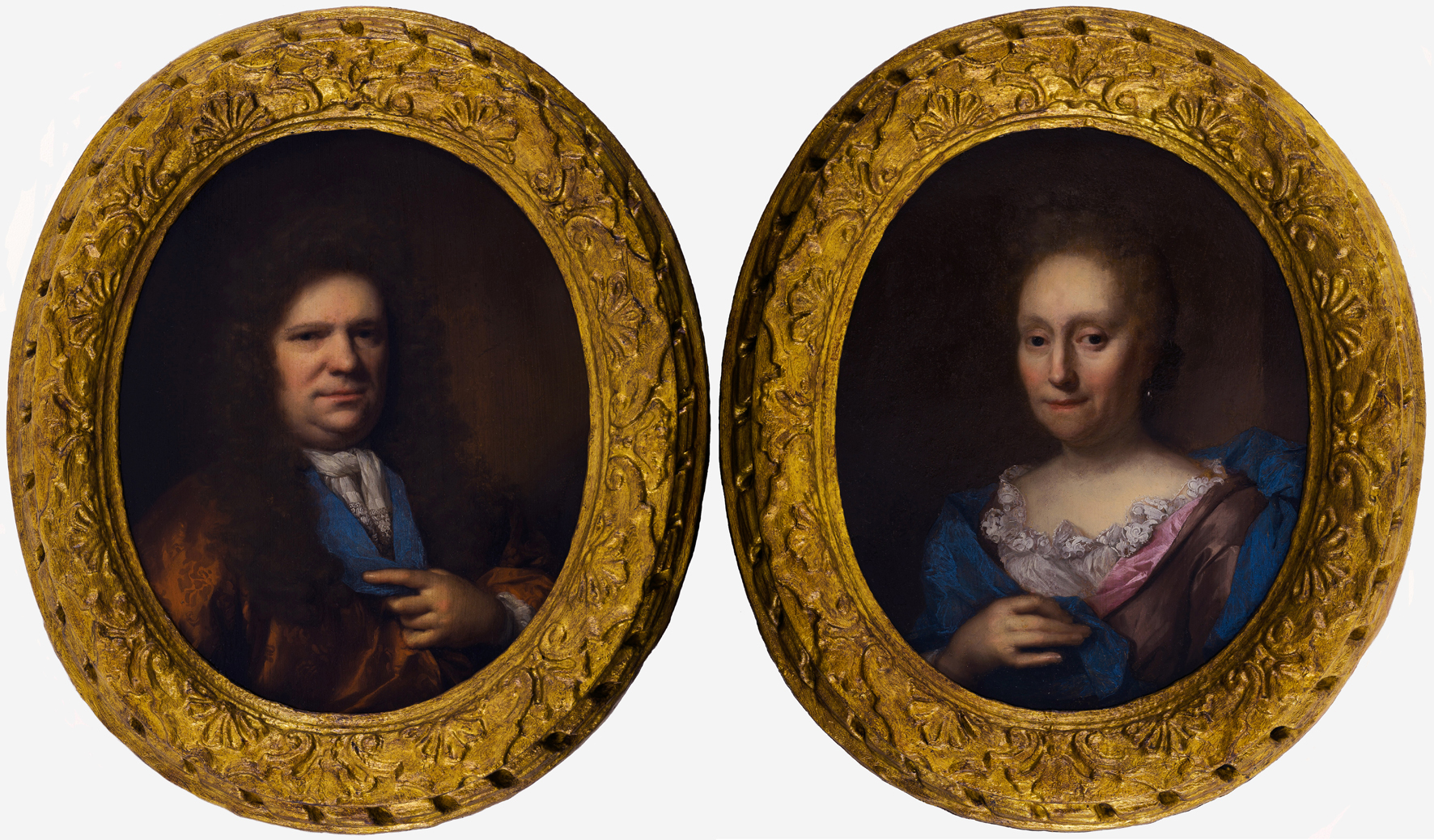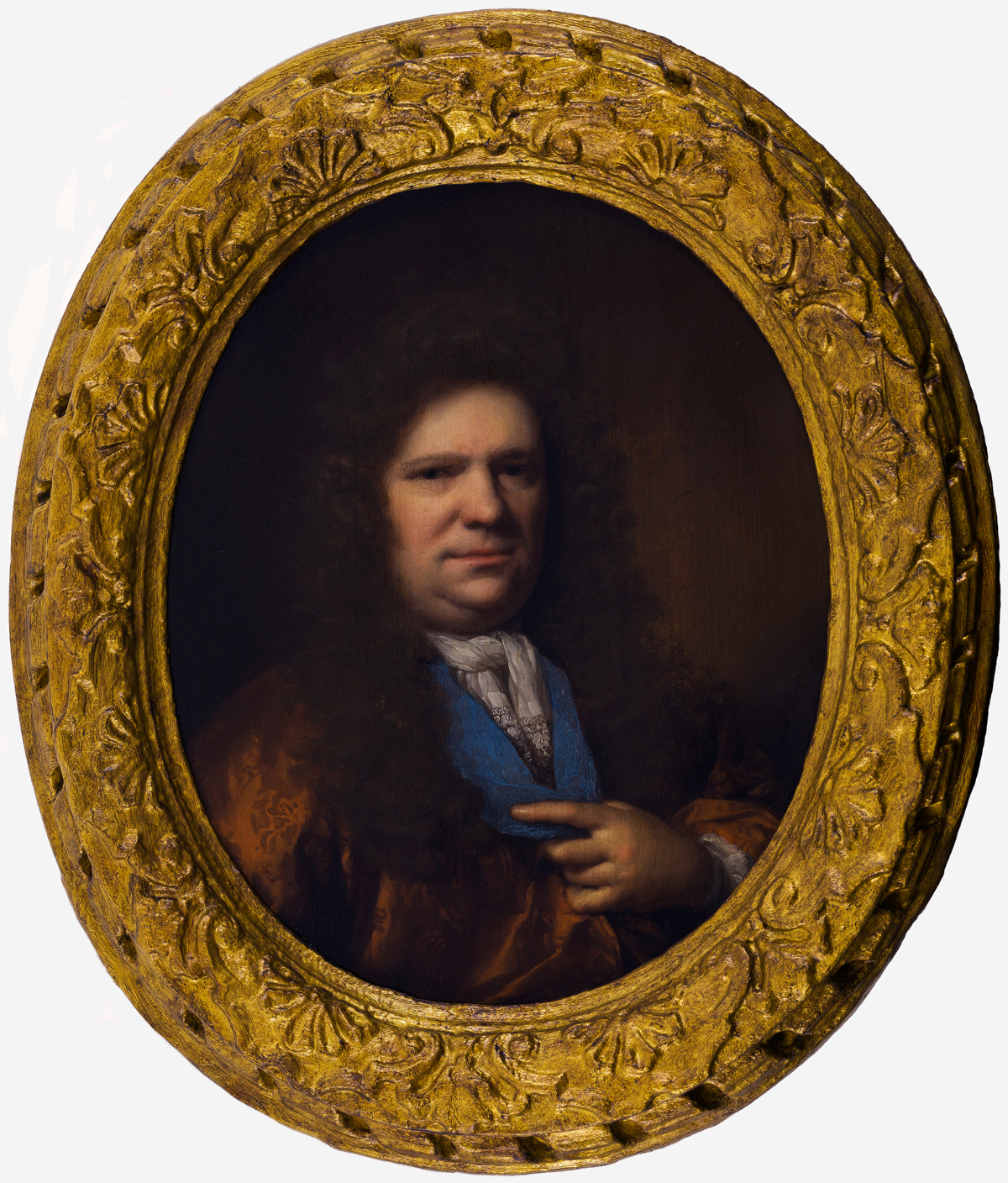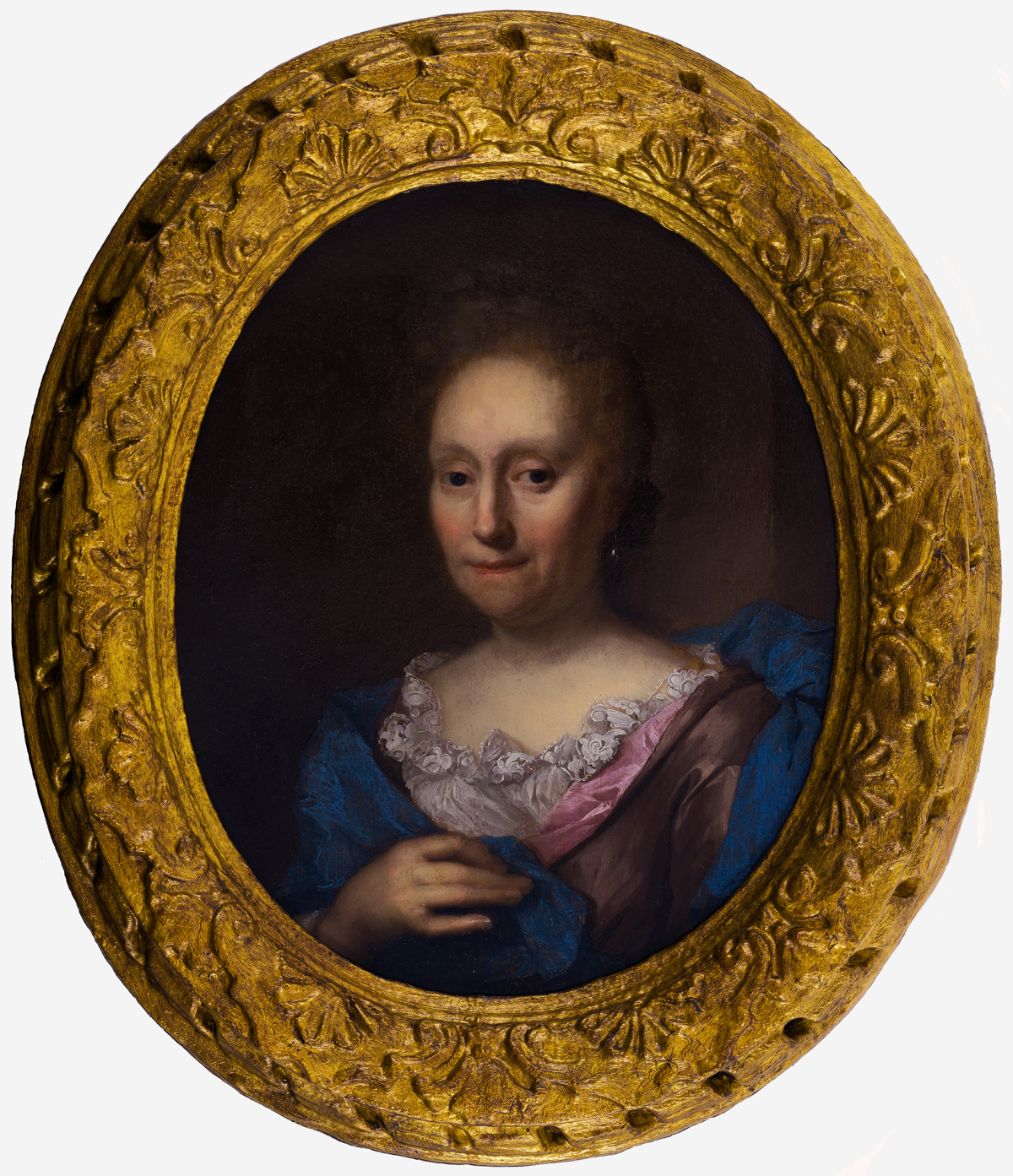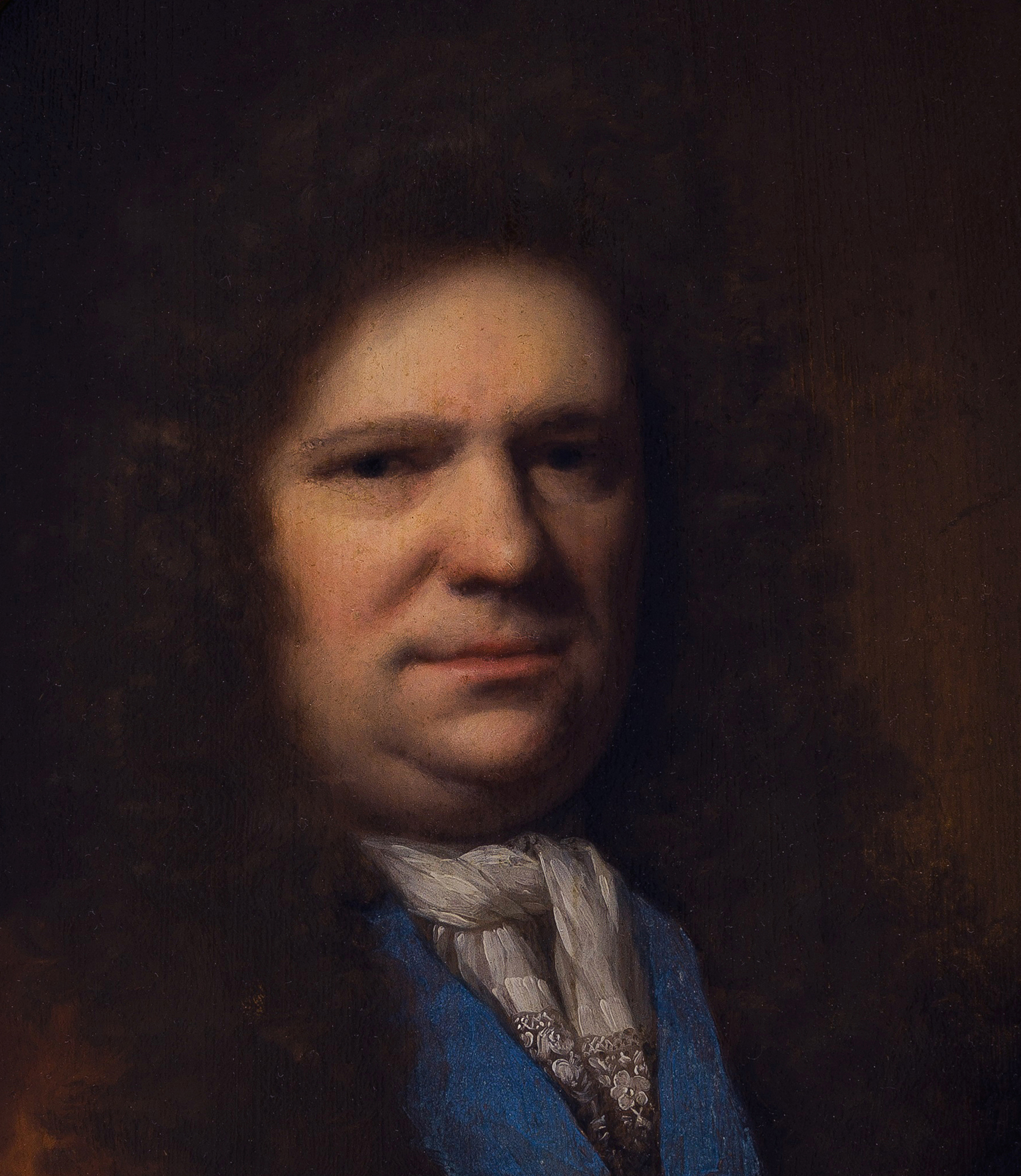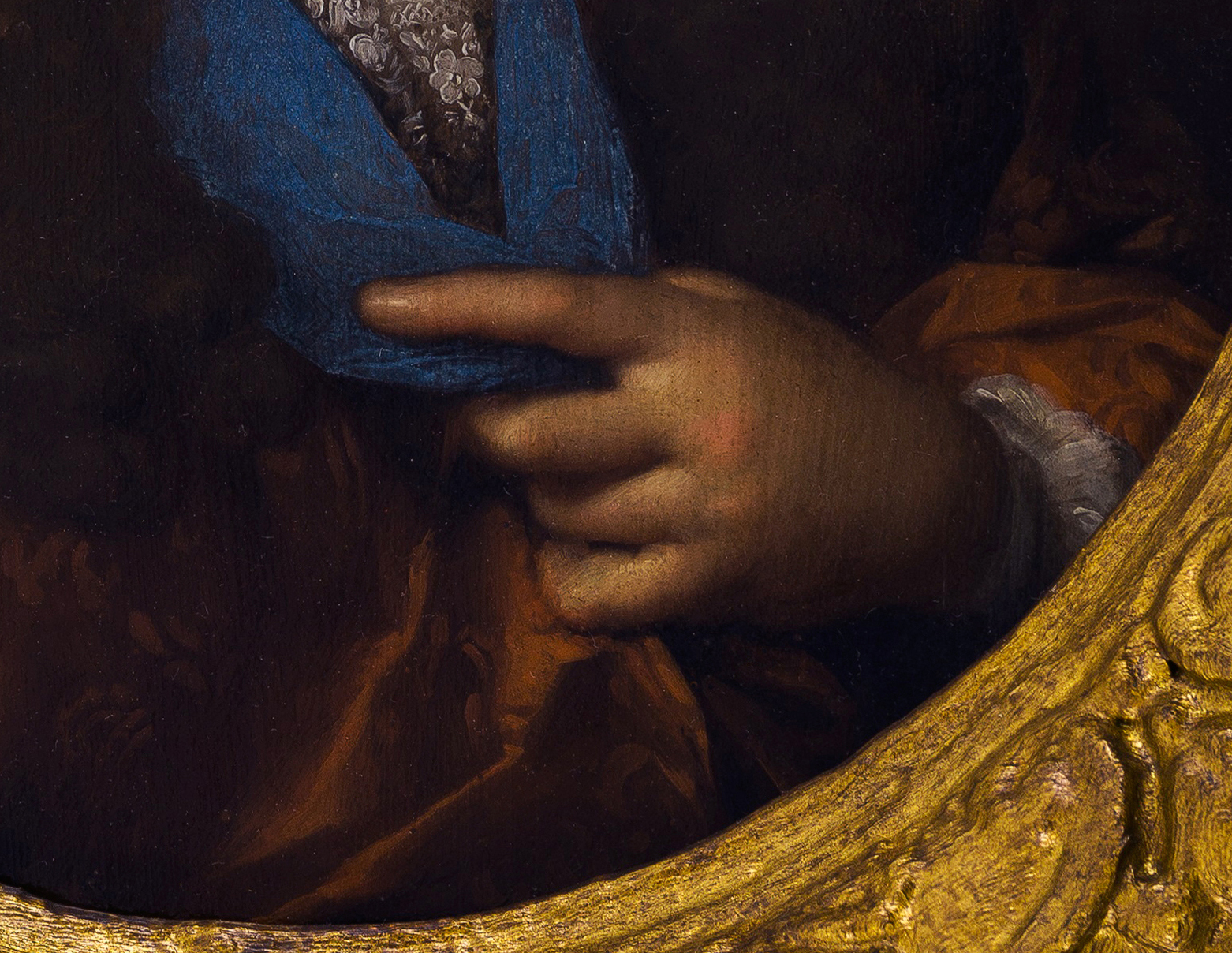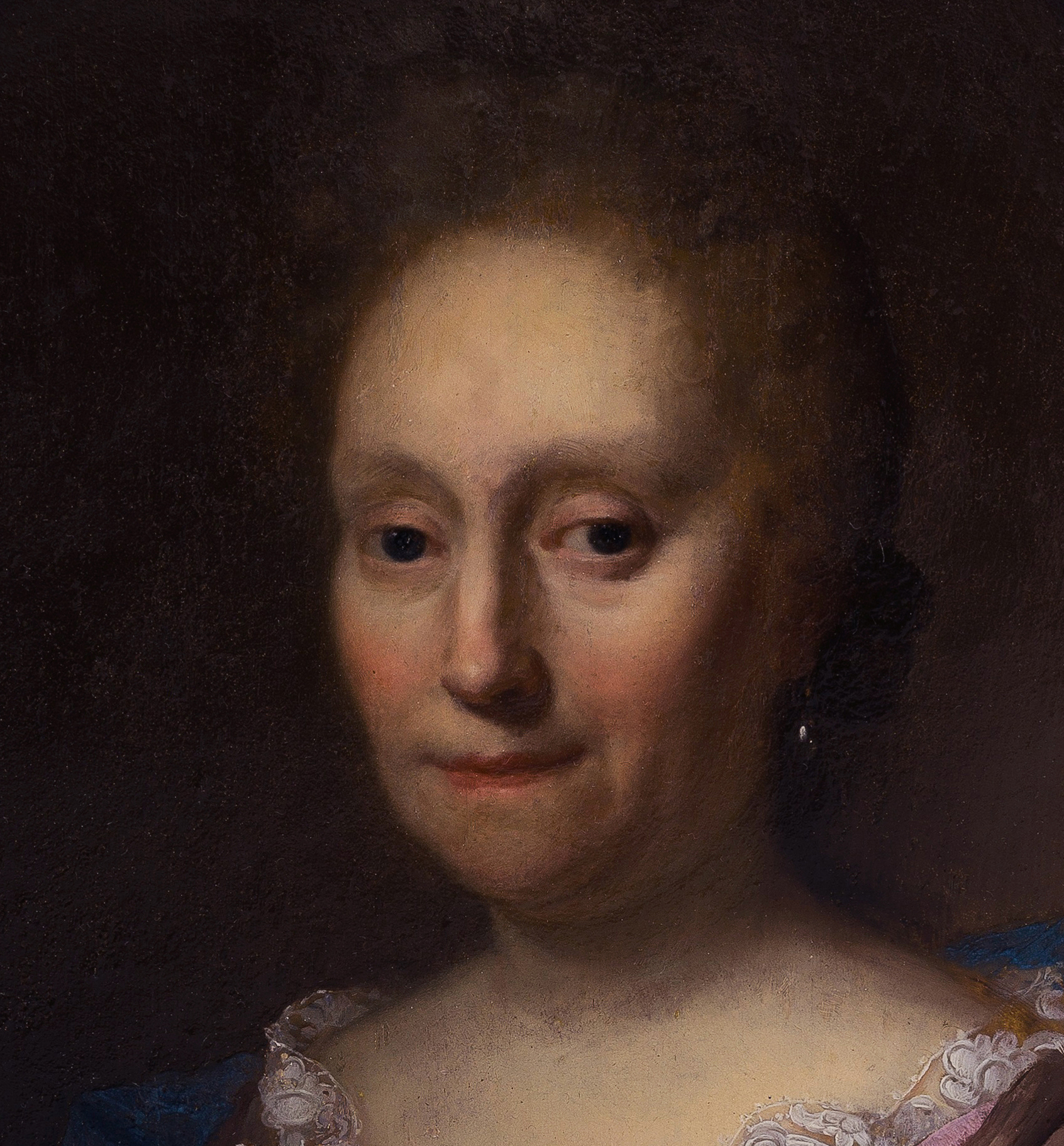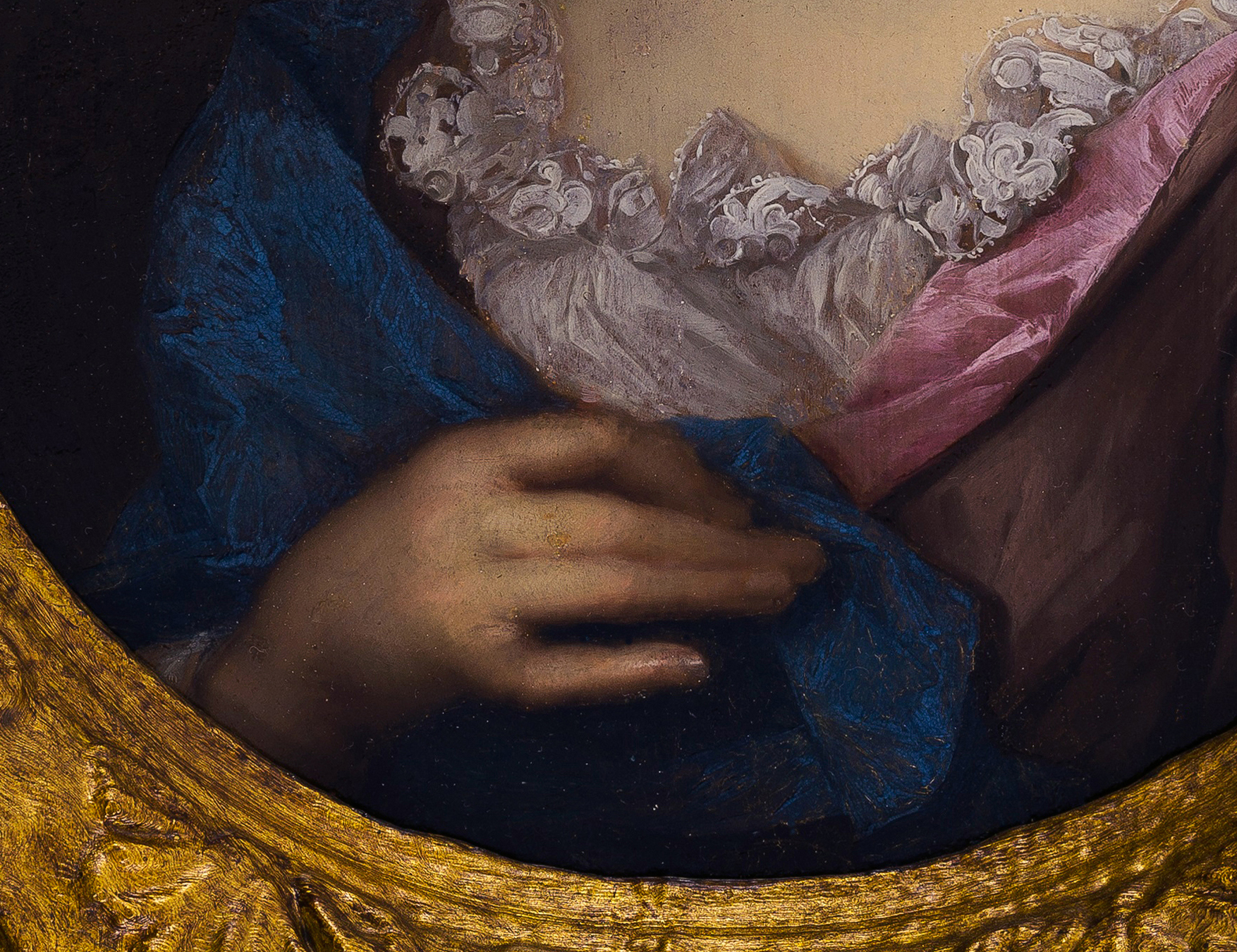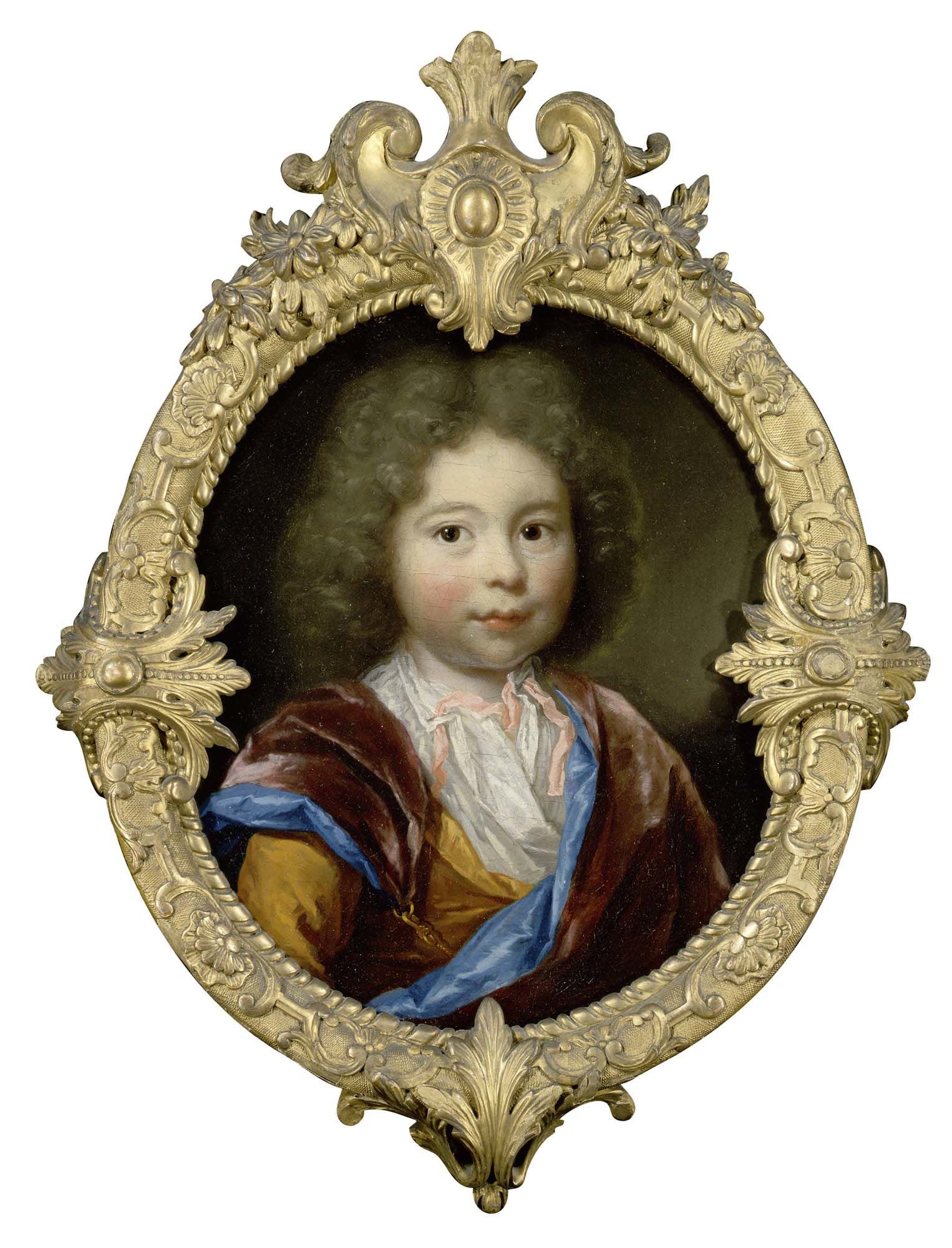ARNOLD BOONEN (Dordrecht 1669 – 1729 Amsterdam)
Arnold Boonen (Dordrecht 1669 – 1729 Amsterdam)
Portrait of a gentleman in ‘Japonsche rock’ and Portrait of a Lady
Both oil on zinc, 28.2 x 20.9 cm (11.1 x 8.2 inch); presented in reproduction composite frames of early 18th-century model
Provenance
Private collection, The Netherlands
***
Born in Dordrecht, Arnold Boonen was first taught by the little known painter Arnold Verbuys in 1682.1 He continued his education however in the studio of the celebrated Godefridus Schalcken, where he worked for six years. Around 1690 Boonen established himself as a master painter in the city of his birth, where he painted portraits of the elite, generally on a small scale. His fame rose quickly during a journey through the German princely states in 1695.
In 1696 Boonen settled in Amsterdam, where he became one of the most fashionable portraitists, favoured by the city’s wealthiest inhabitants, not unlike another Dordrecht painter, Nicolaes Maes, had done a few decades before. His fame was such, that in 1717 he received the prestigious commission to paint Czar Peter the Great and his wife. Boonen’s candlelit scenes were also highly popular.
Portraits by Boonen can be found in the leading museums of the world, including the Rijksmuseum in Amsterdam and the Mauritshuis in The Hague. This charming and intimate pair of portraits of an unidentified husband and wife is likely to have been painted during the 1690s, when Boonen was still working in Dordrecht and very much under the influence of Schalcken, whose refined technique is evident, especially in the minute execution of the hands and other details.2 They can be compared to a pair of portraits by Boonen of a young boy and girl, formerly in the collection of the Metropolitan Museum in New York (fig.).3
We are grateful to Sander Paarlberg and Guido Jansen for their valuable remarks about this paintings.
1. For the artist, see A. van der Willigen and F.G. Meijer, A dictionary of Dutch and Flemish still-life painters working in oils: 1525-1725, Leiden 2003, p. 43.
2. Compare for instance to Schalcken’s portraits of Pieter Teding van Berkhout and his wife Elisabeth Ruysch, both oil on copper, oval, 13.3 x 11.1 cm, dated 1674 and 1675, Stichting Teding van Berkhout; see Anja K. Sevcik (ed.), Schalcken. Gemalte Verführung, exh. cat. Cologne (Wallraf-Richartz Museum) and Dordrecht (Dordrechts Museum) 2015-2016, pp. 186-188, repr. p. 187, cat. nos. 36 and 37.
3. Both oil on canvas, 28 x 24 cm, collection Theodore M. Davis, bequeathed to the Metropolitan Museum in 1915, until deaccessioning in 1989; Katherine Baetjer, European Paintings in the Metropolitan Museum of Art, New York 1980, vol. I, p. 62, ill. vol. II, p. 497; anonymous sale Koller, Zurich, 23 September 2011, lot 3053.
